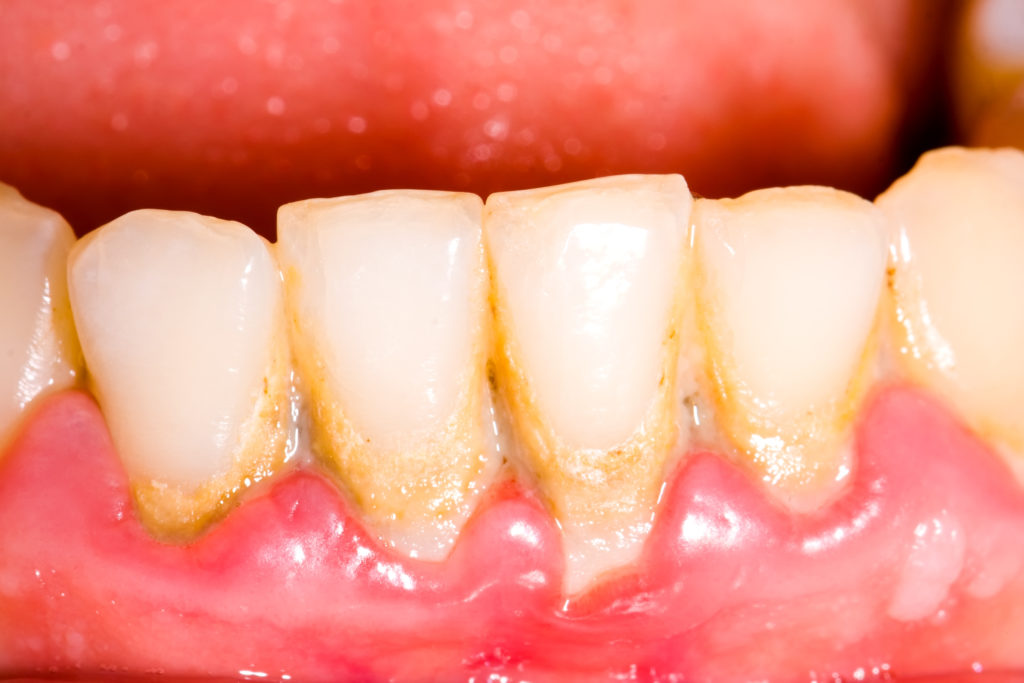[ad_1]
New widespread disease: chalk teeth sometimes more common than tooth decay
According to health experts, "chalk teeth" is a new and widespread disease and is even higher in some age groups than caries. The cause of the disease is, among other things, plastic plasticisers.
When we brush our teeth, it hurts
Health experts repeatedly emphasize the importance of regular brushing. Because good oral hygiene can not only prevent gingivitis, toothache and unpleasant bad breath, but also decay effectively. For people suffering from so-called "chalk teeth", brushing is usually painful. In addition, in these people, prophylaxis is not enough to protect the teeth against cavities. The experts explain what they should know.

Chalk teeth are extremely sensitive to pain
According to health experts, incisional molar hypomineralization (MIH) (also called "chalk teeth") is a new, widespread disease.
According to Professor dr. Norbert Krämer, President of DGKiZ (German Society of Pediatric Dentistry), has a higher rate of occurrence in children and adolescents than caries in some age groups.
As explained in a communication from the DGZMK (German Society of Dental and Oral Medicine), MIH refers to a systemic structural anomaly mainly of enamel, which is due to a mineralization disorder.
It occurs on one to four first permanent molars (molars). Such "chalk teeth" are very sensitive to pain and extremely sensitive to heat, cold and brushing teeth.
Dental disease caused by plasticizers in plastic
According to the DGZMK, MIH has developed rapidly. The disease was scientifically described for the first time in 1987. Today we can talk about a new and widespread disease.
According to reports, an average of 10 to 15% of children suffer from MIH, in children aged 12, according to the 5th German Study on Oral Health (DMS V), this rate now exceeds 30%.
As stated in the paper, plasticisers in foods seem to play a major role in their formation.
Based on animal experiments, a relationship between the consumption of bisphenol A (BPA) and the development of MIH could therefore be demonstrated.
Nevertheless, with proper prophylaxis, it is possible to avoid the infestation of imminent caries and preserve their conservation.
According to the DGZMK, other potential causes of MIH are pregnancy problems, infectious diseases, antibiotics, chickenpox, dioxin and upper respiratory tract disorders.
However, the precise causes are still not clear.
The connection is questioned
However, other experts doubt the link between BPA consumption and the development of MIH.
So writes the Federal Institute for Research on Risks (BfR) in the title of a message:
"The link between" pencils "in children (hypomineralization of molar incisors, MIH) and the absorption of bisphenol A is unlikely given the current state of knowledge."
According to the BfR, reports on a possible link between MIH and BPA are based on the study by Getron et al. (2013), who investigated the link between BPA exposure and mineralization. Enamel in experiments on animals.
The BfR "evaluated this study and concluded that there was no reliable link between the ingestion of BPA via food contact materials and the development of MIH in children".
Decline in quality of life due to sensitivity to pain
According to the DGZMK, clinically, the different severity of the disease is noticeable. While in some patients, the disturbance of mineralization is limited to one hump, in others it affects the entire surface of the teeth.
In the soft form, the areas often white-yellowish or yellow-brown have brown spots on the teeth. In the severe form, also show chipped or missing enamel or even a broken tooth.
The patients concerned complain of pain when they drink, eat and brush their teeth. This affects the quality of life of young patients and complicates treatment at the dentist.
Nevertheless, in these cases urgent therapeutic intervention is urgently required.
Prevention impossible – prophylaxis already
As the changes already occur during tooth development and the exact causes are not yet clear, effective prevention against MIH is not possible, explained Prof. Dr. med. Stefan Zimmer, President of the DGPZM (German Society of Preventive Dentistry (DGPZM).
However, as MIH teeth have a rough surface and a lower quality on the bottom, they are particularly prone to tooth decay.
Therefore, in addition to brushing teeth, particularly intensive prophylaxis should be used to protect teeth against cavities.
For this purpose, fluoridation measurements are particularly available. They can be performed both at the dentist's and at home and must be applied according to age.
Regular dentist check-ups, fluoride treatment, and tooth building with different techniques can help preserve teeth evenly affected by MIH with care throughout their lives. (Ad)
Source link